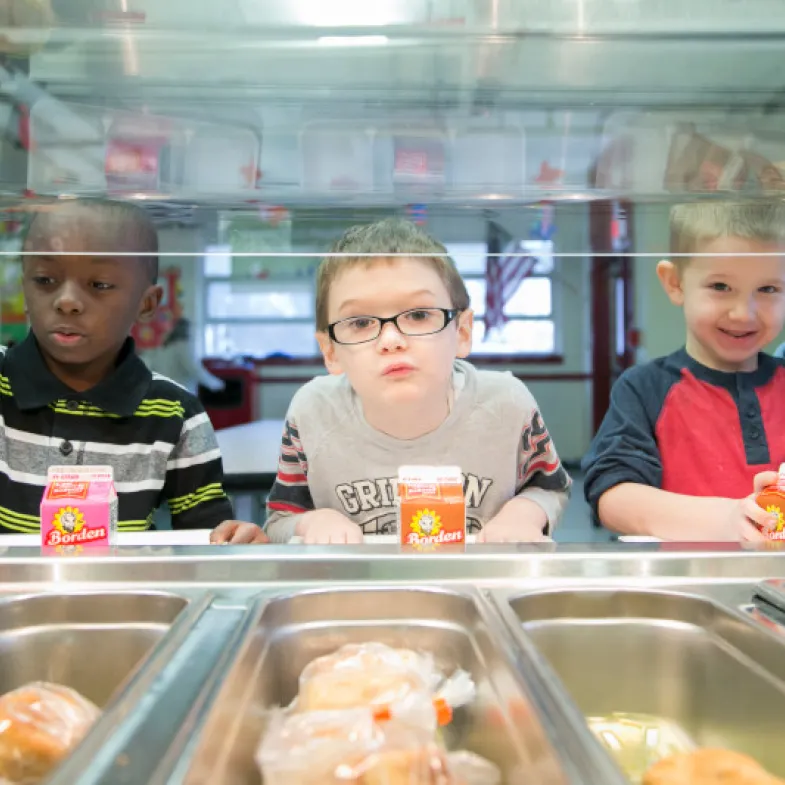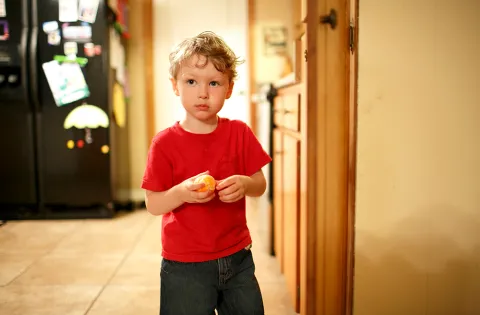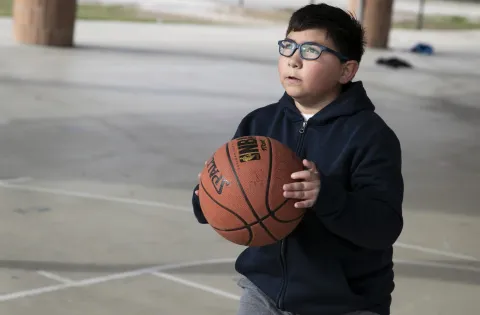
As a nation, we’re standing on the precipice of unprecedented progress in ending childhood hunger. But without continued political will and action, more kids will slip into hunger and poverty.
During the pandemic, despite an ongoing health and economic crisis, the number of kids facing hunger dropped dramatically. This is in large part due to swift and impactful action from Congress.
But today, the pandemic safety net woven over the last two years is coming undone and all of this progress now hangs in the balance.
Why? Because many of the policies put into place during the pandemic have expired while at the same time, families face the fallout of ongoing economic uncertainty – record-high inflation, high food and gas prices and rising housing costs.
This puts children at even greater risk of hunger.
The bottom line: Kids do not need to be hungry. There are solutions right in front of us. And, as Congress heads back to work after the midterm elections, there is a short but important window of opportunity where they can prioritize the policies and programs that are proven to work.
Here are five immediate and actionable things Congress can do today to ensure more kids have access to the food they need.
- Make the enhanced Child Tax Credit permanent.
The Child Tax Credit, or CTC, is a tax refund designed to help families afford the everyday expenses of raising a child. Historically, the CTC gives money back to parents and caregivers at tax time to help offset the costs of raising kids – think housing, food, childcare, healthcare and other necessities.
It’s been around for decades, but only reached a limited group of parents – those with an income high enough to owe enough taxes to receive a refund – leaving out families with the most need: those who make little or no income.
In 2021, the CTC was temporarily “enhanced” to provide increased financial relief to parents as they struggled with the economic effects of the pandemic.
The enhanced CTC was a game-changer for families. Research shows families spent more on basic necessities, like clothing, rent, utilities and groceries. Many families also reported using it for emergency savings, child care, or starting a college fund, all of which could have a meaningful impact on building a path out of poverty. The temporary expansion of the CTC helped to reduce child poverty by one-third, lifting 3.7 million children from poverty as of December 2021.
Unfortunately, this enhanced benefit expired at the end of 2021, immediately reverting back its original form. When that happened, within one month an estimated 3.7 million children slipped back into poverty. - Close the summer meals gap by providing flexibility around outdated rules.
The federal summer meals program helps kids get the meals they need during the summer months, even when schools are closed. But the way the program was designed means it does not fully meet the needs of families and children today, especially those living in rural and hard-to-reach communities.
Today, only 1 in 7 kids who need a meal in the summer can actually access one.
During the pandemic, schools and community groups were provided with the flexibility to serve meals in ways that worked best for their communities. This meant they could deliver meals to families or families could even pick up meals for their kids, sometimes multiple ones at a time, for example.
The current summer meals programs operate under a “congregate” model, mandating that children consume meals onsite. Congress should utilize the hard-earned lessons from the pandemic by providing flexibility around this rule and implementing non-congregate options to better meet the needs of communities today. - Authorize a nationwide Summer EBT program.
To close the summer meals gap, Congress should also support and authorize a nationwide Summer Electronic Benefits Transfer, or EBT, program, which provides families with an additional modest benefit in the summer months to help pay for groceries.
Summer EBT has been piloted in a small number of states for about 12 years, and we know it works. The pilot was estimated to reach approximately 300,000 children across 10 states and Indian Tribal Organizations at its peak in 2018, and it was proven to reduce very low food insecurity among children by one-third.
Because Summer EBT is a highly effective strategy, a version of it was implemented during the pandemic and was hugely effective in helping families with free or reduced-price eligible students make up missed meals during school closures and other ongoing disruptions. In 2021, Pandemic EBT reached nearly 30 million additional kids. - Expand access to no-cost school meals.
School meals play a critical role in providing kids with more of the nutrition they need. During the pandemic, kids across the nation had access to free school meals, but it’s not a new concept. The Community Eligibility Provision, or CEP, helps schools reach more kids with the healthy meals they need with less red tape.
While nationwide, more than 30,000 schools participate in CEP, serving over 16 million students, there’s much more that can be done to ensure as many schools and districts are participating and, ultimately, connecting more kids to free meals so they can focus on learning and not their empty stomachs. - Improve access to the WIC program.
The Special Supplemental Nutrition Program for Women, Infants and Children, or WIC, supports the health of low-income women, infants and children up to age 5 who are at risk of hunger. It provides nutritious food, nutrition education, breastfeeding support and referrals to health care and social services for millions of families.
But WIC participation rates face a sharp decline due to many barriers, including challenging shopping experiences. In order to increase WIC participation among those who need it most, the program needs to be modernized to meet people where they are today.
Before Congress heads home for the holidays and a new Congress starts in January, they must include these policies in any year-end legislation. Kids are counting on them.
Join us on Wednesday, December 14 for a Day of Action for kids where we’ll make it easy for you to get in touch with your lawmakers.



